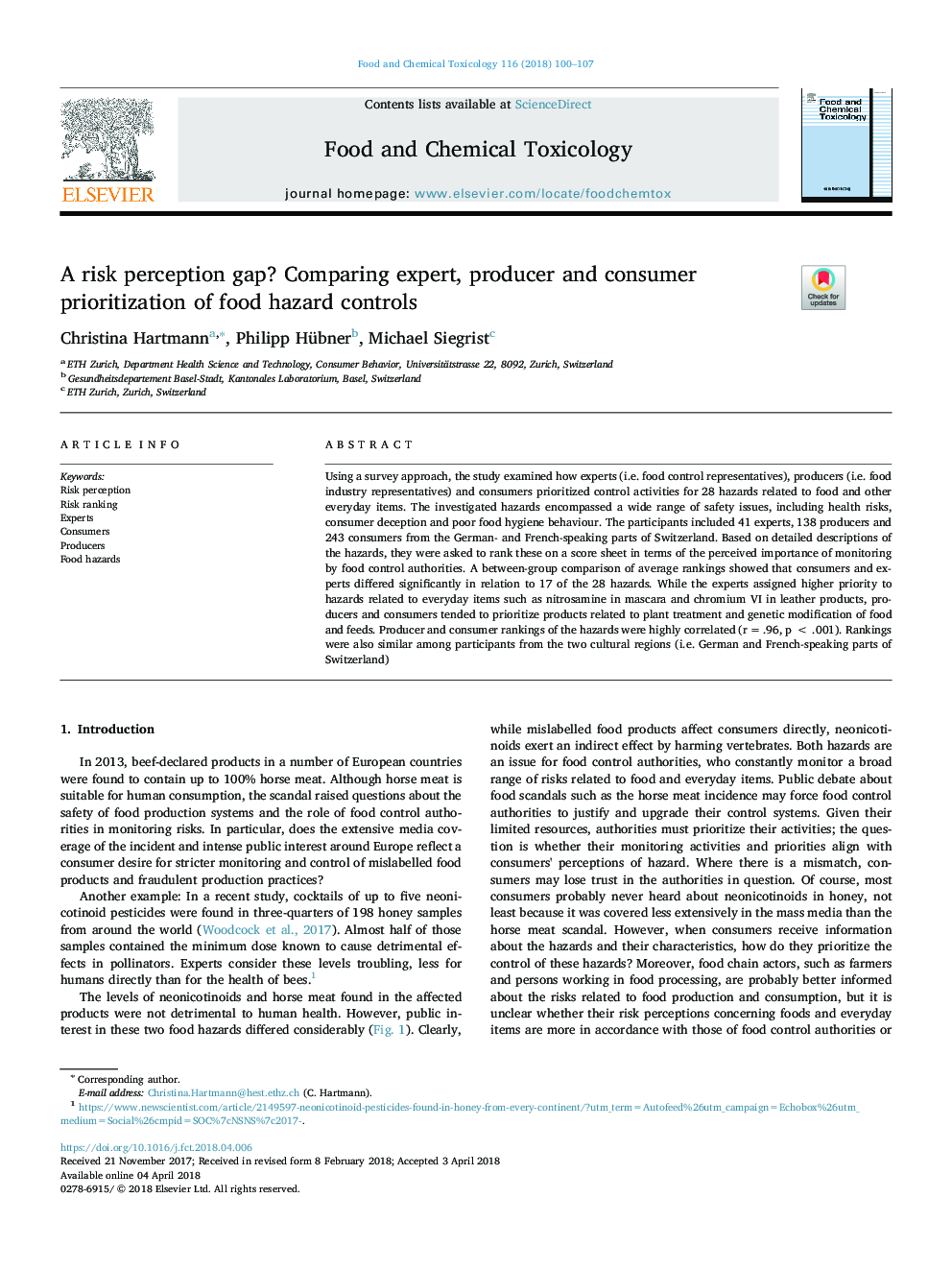| Article ID | Journal | Published Year | Pages | File Type |
|---|---|---|---|---|
| 8547117 | Food and Chemical Toxicology | 2018 | 8 Pages |
Abstract
Using a survey approach, the study examined how experts (i.e. food control representatives), producers (i.e. food industry representatives) and consumers prioritized control activities for 28 hazards related to food and other everyday items. The investigated hazards encompassed a wide range of safety issues, including health risks, consumer deception and poor food hygiene behaviour. The participants included 41 experts, 138 producers and 243 consumers from the German- and French-speaking parts of Switzerland. Based on detailed descriptions of the hazards, they were asked to rank these on a score sheet in terms of the perceived importance of monitoring by food control authorities. A between-group comparison of average rankings showed that consumers and experts differed significantly in relation to 17 of the 28 hazards. While the experts assigned higher priority to hazards related to everyday items such as nitrosamine in mascara and chromium VI in leather products, producers and consumers tended to prioritize products related to plant treatment and genetic modification of food and feeds. Producer and consumer rankings of the hazards were highly correlated (râ¯=â¯.96, pâ¯<â¯.001). Rankings were also similar among participants from the two cultural regions (i.e. German and French-speaking parts of Switzerland)
Related Topics
Life Sciences
Agricultural and Biological Sciences
Food Science
Authors
Christina Hartmann, Philipp Hübner, Michael Siegrist,
